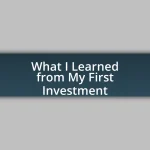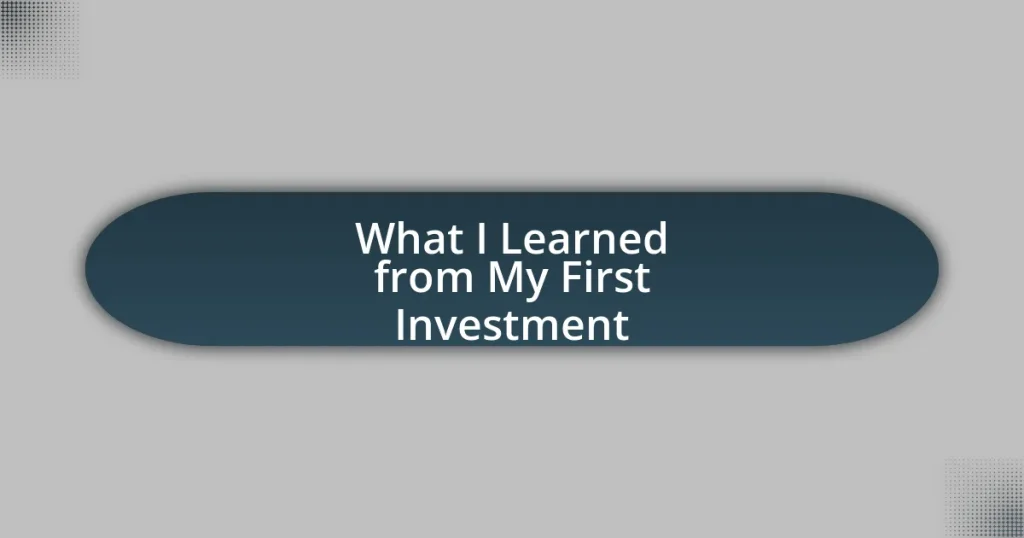Key takeaways:
- The emotional journey of investing includes excitement, responsibility, and a shift in perspective on success and failure.
- Key investment principles include diversification, due diligence, and compound interest, which are vital for managing risk and maximizing returns.
- Emotional biases, such as overconfidence and loss aversion, can lead to poor investment decisions and should be acknowledged for rational investing.
- Learning from mistakes and setbacks is crucial, as these experiences foster growth and a better understanding of market dynamics.
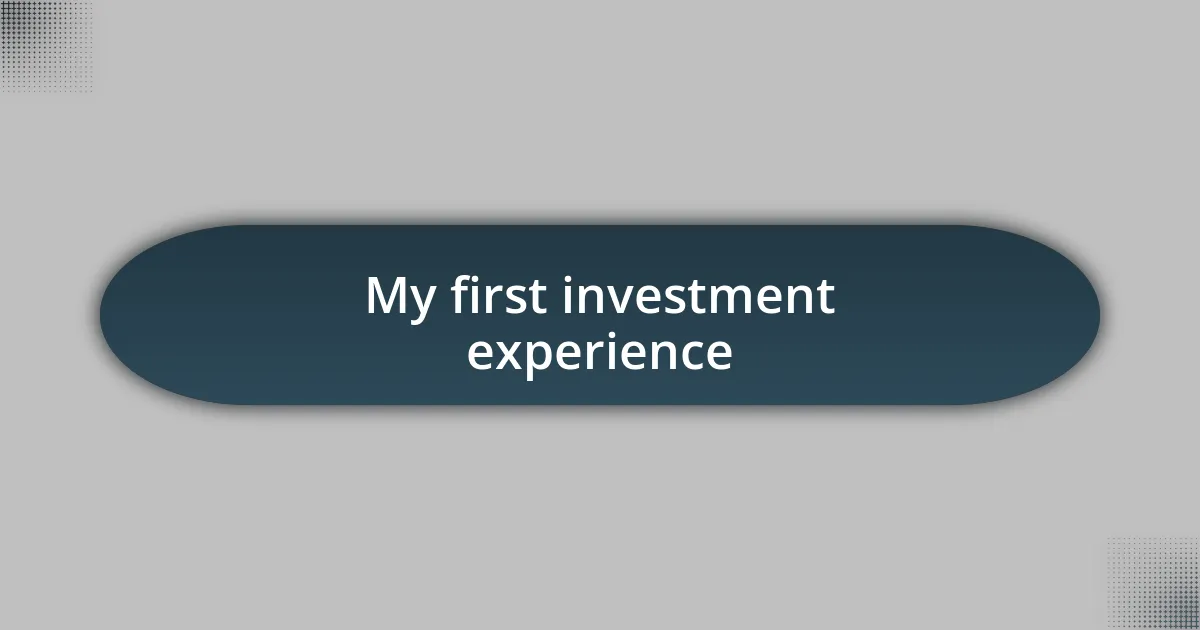
My first investment experience
I still remember the excitement coursing through me as I made my first investment in a small tech startup. It felt like stepping onto a roller coaster, knowing there would be ups and downs but eager to see where it would take me. Did I really just take my first step into the investment world?
As I researched the company, I found myself caught between potential and risk, grappling with the thrill of investing money I had saved. I vividly recall the night I pressed the “buy” button; my heart raced as if I’d just accomplished something monumental. It’s funny to think how a few hundred dollars could spark such a whirlwind of emotions.
What surprised me most was the sense of ownership and responsibility that came over me. Suddenly, I was invested not just financially but emotionally, cheering for the company’s growth like a sports fan rooting for their team. It made me wonder: how does our financial involvement alter our perspective on success and failure?
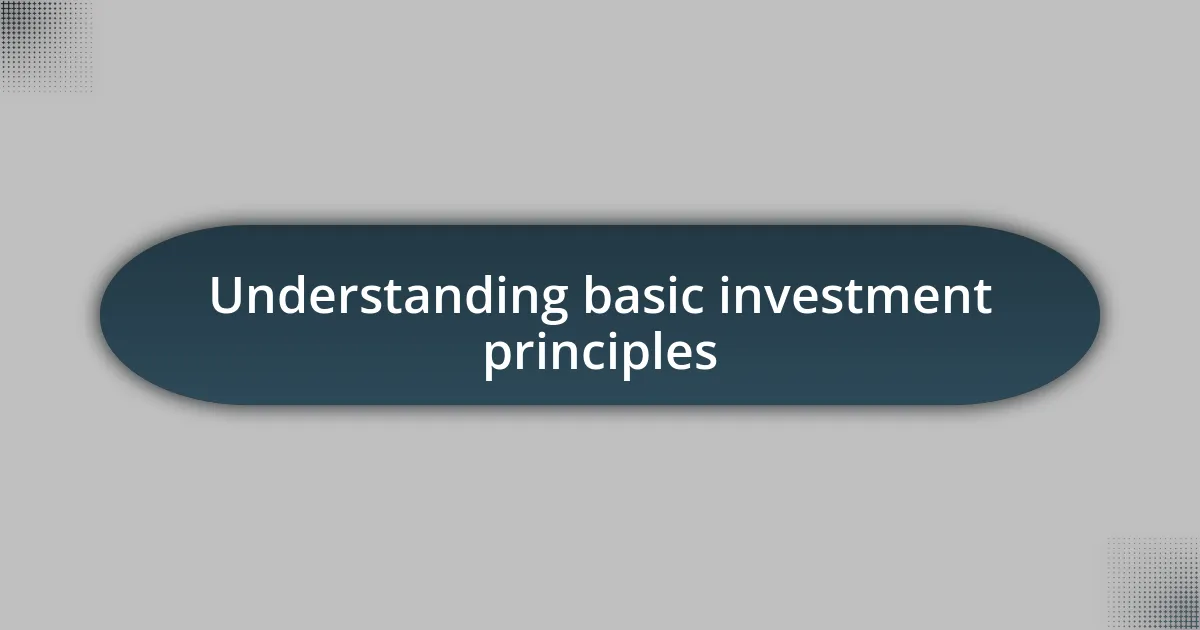
Understanding basic investment principles
Understanding basic investment principles is essential for anyone diving into the world of investing. One of my biggest realizations was that investing isn’t just about making money; it’s about understanding how to manage risk. The thrill can quickly turn into anxiety if you don’t grasp the basic principles like diversification, which means spreading your investments across various sectors to mitigate potential losses.
When I first began investing, I did it all on a whim, driven by excitement rather than a solid plan. It wasn’t until I sat down to analyze my choices that I understood the importance of due diligence. I learned that researching a company’s fundamentals—like its earnings, business model, and market position—can significantly influence your outcomes. If only I had known then how crucial it is to approach investments with a strategic mindset!
Another principle that took some time to sink in for me was the concept of compound interest. Seeing it in action was like watching magic unfold. The idea that my money could grow not just from the initial investment but also from the earnings it generated was enlightening. It’s fascinating how time and patience can transform a small sum into something greater, making it clear that investing is not a sprint but a marathon.
| Investment Principle | Description |
|---|---|
| Diversification | Spreading investments across different sectors to reduce risk. |
| Due Diligence | Thorough research on investments before making decisions. |
| Compound Interest | Interest earned on both the initial principal and accumulated interest. |
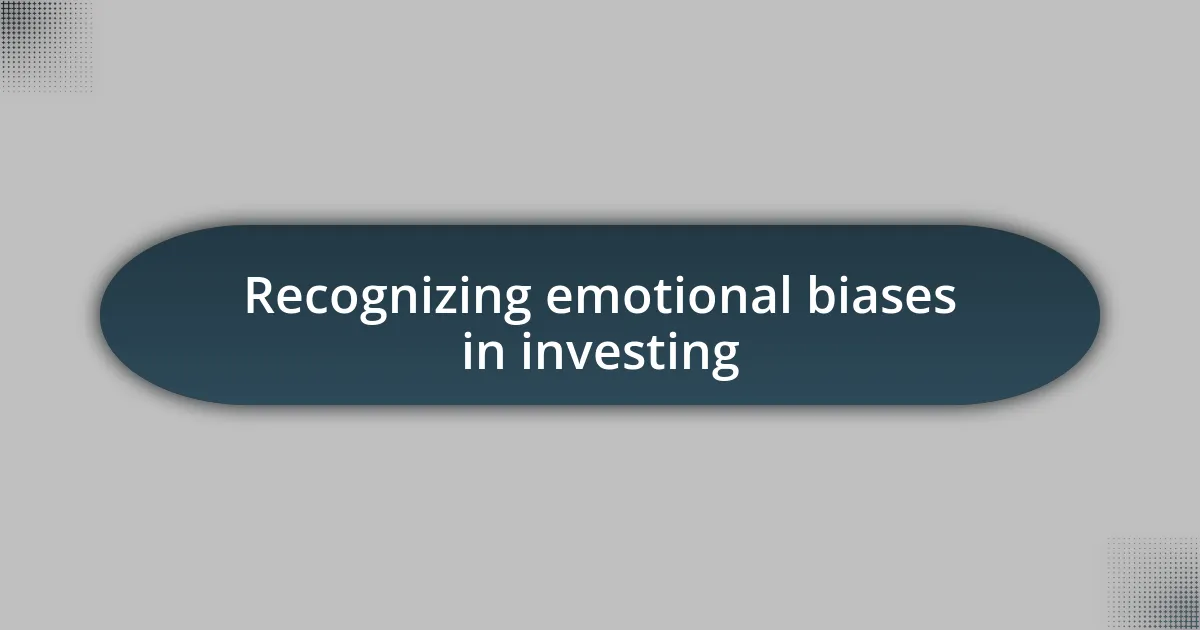
Recognizing emotional biases in investing
Everything about investing can be an emotional ride, and recognizing emotional biases is crucial. I remember feeling an overwhelming sense of euphoria when I made my first profitable investment, which clouded my judgment about future choices. This emotional high made me overlook essential analysis, leading to rash decisions later on.
Here are some common emotional biases that investors often encounter:
- Overconfidence: Believing too strongly in your ability to predict market movements can lead to risky decisions.
- Loss Aversion: The fear of losing money can sometimes prevent investors from making profitable moves.
- Herding: Following the crowd, especially during market fads, can lead to poor investment choices.
- Recency Bias: Overemphasizing recent events or trends often skews perceptions of future performance.
Acknowledging these biases can help pave the way for a more rational and thoughtful investing strategy.
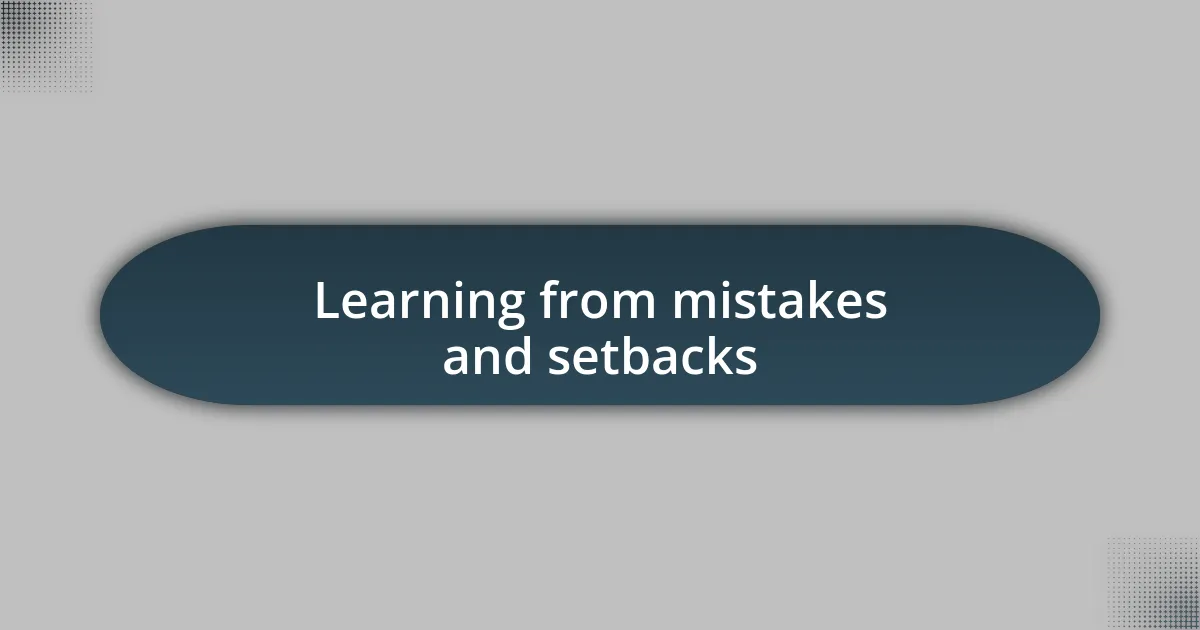
Learning from mistakes and setbacks
When I reflect on my first investment, it’s clear that setbacks were my biggest teachers. I once made a purchase solely based on a friend’s recommendation, ignoring my own research. That investment turned sour, and I found myself asking, “What was I thinking?” Embracing that mistake shifted my perspective, teaching me to always do my due diligence, rather than rely on hearsay.
There’s a certain grit developed when you face losses. I can still recall the sting of watching my portfolio dip unexpectedly, which felt like a personal failure. But instead of wallowing in despair, I analyzed what went wrong with a clearer mindset. This process forced me to understand market trends better, reminding me that every setback is an opportunity for growth.
I believe that real learning happens when you step back and evaluate your emotions tied to your investments. I learned that it’s easy to let disappointment cloud judgment. Instead of shutting down, I now openly discuss my mistakes with fellow investors. It turns out, sharing these stories not only mitigates the embarrassment but also opens doors to new insights and strategies. Have you had a similar experience? It’s interesting how these conversations can reshape our approach to investing.

Strategies for future investments
As I look forward to future investments, I find diversification to be an essential strategy. When I first started, I concentrated too heavily on one sector, which left me vulnerable to market fluctuations. The lesson? Mixing different asset classes can cushion your portfolio against unpredictability. Have you considered how diverse your investments are?
Another key strategy is setting clear investment goals. I recall a time when I invested without a specific target in mind, and it led to confusion and indecision. It helped me realize that having a defined purpose for each investment—whether it’s short-term gains or long-term growth—keeps me focused and makes it easier to assess my progress.
Lastly, I’ve learned the importance of continuously educating myself. I often find myself delving into books and following market trends to stay informed. How else can I expect to make sound decisions if I don’t understand the landscape? The more I learn, the more confident I become in my ability to navigate future investments.





